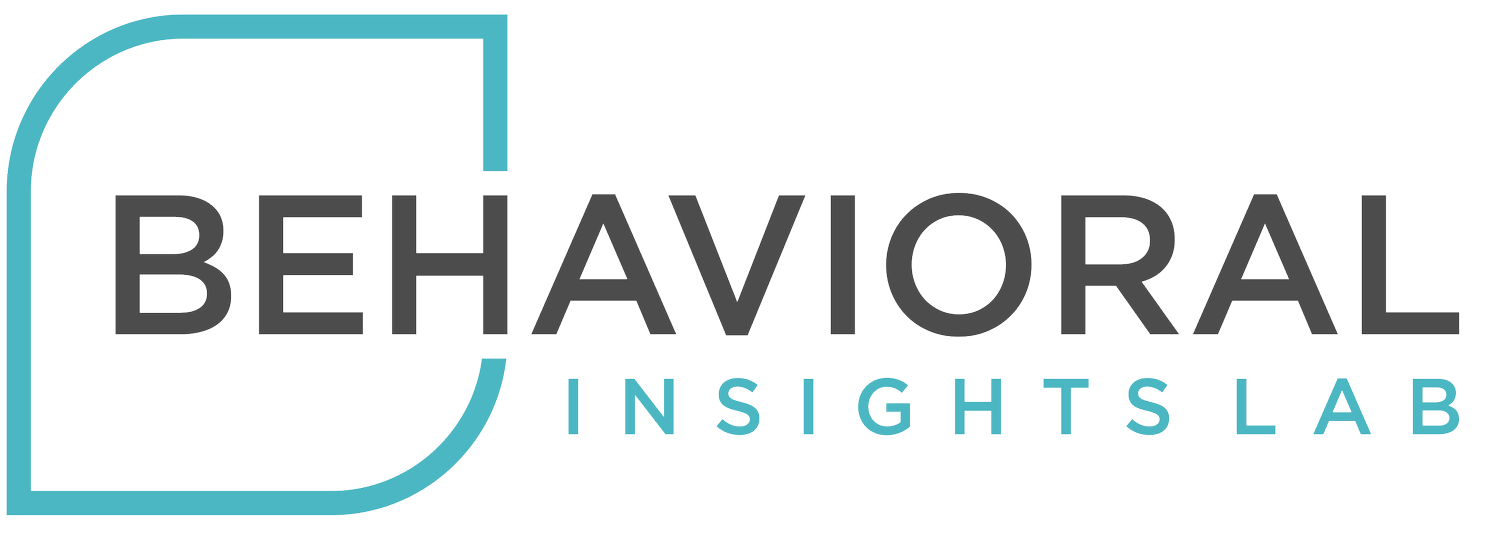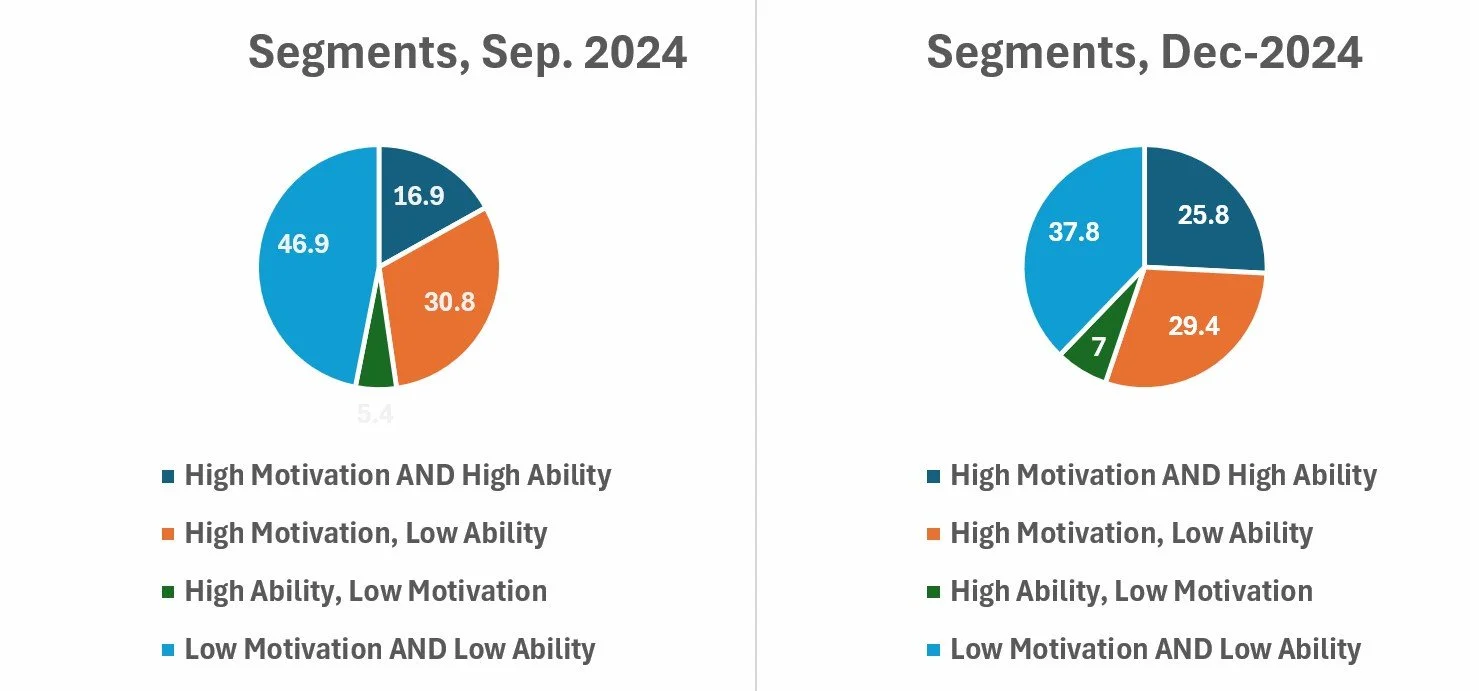Using Segmentation to Understand Changes in HPV Vaccination
Per the Fogg Behavior Model (FBM), the largest response to a prompt comes from target groups who already have motivation and ability. These are the folks who are ready to adopt a behavior. In a recent evaluation conducted by the Behavioral Insights Lab, we found a 9.5 percentage point increase in HPV vaccination in one arm and a 5.3 percentage point increase in HPV vaccination in the second arm. These changes resulted from a social media intervention implemented alongside the national introduction of the HPV vaccine in Bangladesh in October-November 2024.
What We Saw:
The bar graph shows overall increases in vaccination rates due to the national vaccine introduction across four behavioral segments. There was a 41-percentage point increase in HPV vaccination reported by caregivers of adolescent girls who had High Motivation and High Ability. Caregivers with either high motivation or high ability (but not both) reported about a 30-percentage point increase in the vaccination rate. Caregivers with Low Motivation and Low Ability reported an 18-percentage-point increase in the vaccination rate.
The composition of the segments shifted over this period. The pie charts show a 9-percentage point increase in the proportion of caregivers in the High Motivation and High Ability segment and a corresponding decline in the Low Motivation and Low Ability Segment.
What This Means: Large increases in vaccination rates occurred among the most motivated and able segment. Those with lower levels of motivation and ability (the majority) need continued support.


